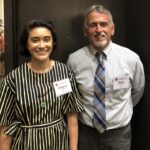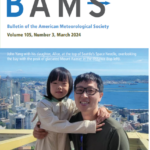Dr. Raghu Murtugudde, ESSIC professor, was featured on WYPR 88.1 FM on Monday afternoon to discuss recent extreme weather events that have swept the United States. (Click to listen to interview.)
During Midday with Dan Rodricks, Murtugudde was asked if storms like the blizzard that struck the Washington Metropolitan area in February 2010 and Hurricane Irene in August 2011 should be seen as warning signs for more extreme weather to come.
Murtugudde said these weather occurrences – like last week’s heat wave – are linked to climate change, and together show a clear sign of change.
Murtugudde said these weather occurrences – like last week’s heat wave – are linked to climate change, and together show a clear sign of change.
Rodricks asked Murtugudde about climate scientists that say more time needs to pass, such as 50 or 100 years, in order to determine if this extreme weather is cause for concern.
“That’s kind of a fallacy, we have enough knowledge already … let’s not wait,” Murtugudde said. “All of the indicators are there, and we cannot wait 50 years to see [what will happen].”
Rodricks and his co-host joked that they had never heard of the weather term derecho before last month’s storm, and asked if derechos in the area are unusual.
Murtugudde said it hasn’t happened in the area for a while, but they aren’t unusual in the Northern Hemisphere. Derechos, he said, are essentially thunderstorms that produce straight, hurricane-like winds.
According to The Washington Post, temperatures in Washington, D.C. climbed to 104 degrees on June 29, and “The storms continually ingested the hot, humid air and expelled it in violent downdrafts – crashing into the ground at high speeds and spreading out, sometimes accelerating further.” The article also reports winds peaked in the area at 79 mph in Reston, Va.
Murtugudde, said the derecho did indeed form because of warming temperatures.
As the interview concluded, Rodricks asked if the string of wildfires in the West and droughts and floods throughout the U.S. are the types of conditions that should be expected now and into the future because of climate change.
Murtugudde said this is exactly what should be expected, and there are “solid physics” involving changes in temperature and precipitation that explain the extreme weather.






